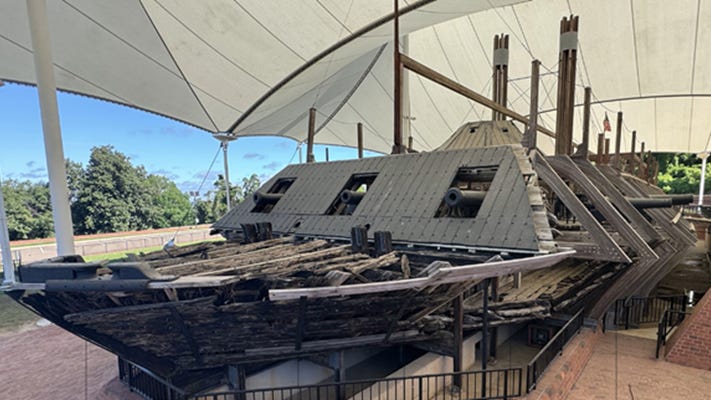Ironclad Cairo Being Eaten by Nature
There's a whole lot of fungus among the USS Cairo's wooden timbers. Scientists conduct study to help find ways to slow decay of historic ironclad at Vicksburg
There’s a whole lot of fungus among the USS Cairo’s wooden timbers. Scientists conduct study to help find ways to slow decay of historic ironclad at Vicksburg
Confederate ships Little Rebel, Colonel Lovell and General Beauregard proved harmless, but Alternaria, Cladosporium and Curvularia are doing a real number on famed Civil War ironclad USS Cairo.
That’s because the latter are among a host of fungi eating away at the star attraction of Vicksburg National Military Park. The Cairo was the first armored vessel sunk by an electrically detonated torpedo and has been on display for decades.
A recent study found the wooden wreck is suffering continued fungal degradation, despite the application of chemical treatments over the years. Scientists who cleaned and examined the ironclad at Vicksburg National Military Park last year were alarmed by what they witnessed and have since analyzed.
“Finding so many fungi that cause wood decay alive in the ship timbers was a surprise,” said lead author Robert “Bob” Blanchette, a professor of plant pathology at the University of Minnesota.
“The wood surfaces are decayed and many of the timbers have had their strength properties compromised -- but many of the timbers are large and thick and still have moderately good integrity,” Blanchette wrote in an email to the Civil War Picket. “However, the presence of active decay fungi indicates they are progressively causing additional decay.”
The study, published in the Journal of Fungi, urges the Cairo -- which sits beneath a fabric canopy, but has open sides -- be moved indoors to a…



Yes . It was in such amazing condition when they raised it. Then they had no idea what to do with it for way too long. So it sat in a boat yard and rotted to what's left on display.
But NPS historian Ed Bearss got to make a name for himself!!!
I remember when they were making plans to raise the ironclad from the river bottom. This poor historical artifact has had nothing but bad luck from the beginning of her second life as a piece of history.